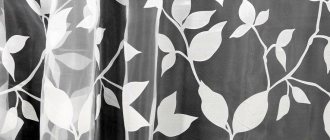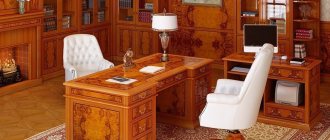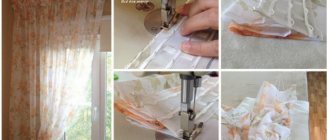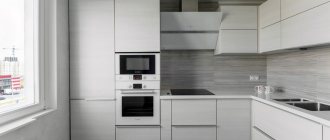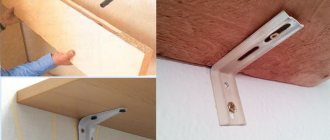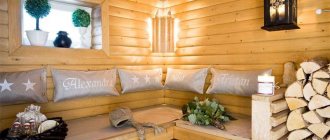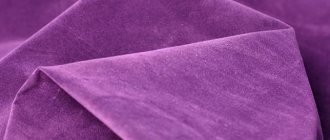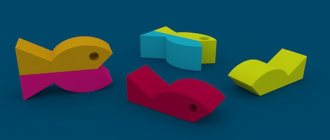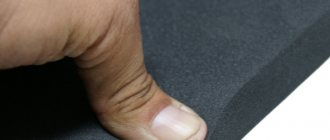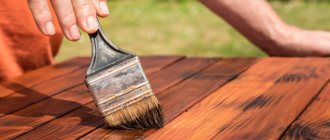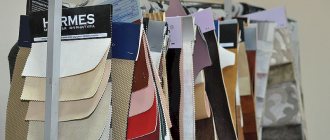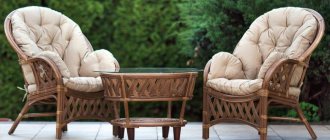What can be made from bamboo
In southern countries I have seen many useful things made from bamboo, please tell me how this material can be used to decorate a garden plot.
T. Petrova, Korolev
Decorative structures made from bamboo are popular all over the world, but are not yet widespread in regions with cold climates.
EVERYTHING YOU NEED FOR THIS ARTICLE IS HERE >>>
Although herbaceous bamboo species are native to the tropics, some woody species are adapted to life in colder, temperate regions. Representatives of the Sasa genus are adapted to the conditions of the Kuril Islands and Sakhalin.
Bamboo for summer cottages up to the Moscow region (with shelter for the winter) - Kuril sasa (sasa) 0.3-2 m high and fargesia (mountain Chinese bamboo)
. As a rule, frost-resistant bamboo can withstand temperatures down to -20 ° C.
Bamboo is everywhere
Massive flowerpots with bamboo decorate the front entrance of a country house, terraces and patios. The fairly frost-resistant and slow-growing Shibataea kumasaca
(aka
ruscifolia, Bambusa aureostriata, Bambusa kumasaca, Phyllostachys ruscifolia, Sasa aureostriata
). It has a number of advantages - it is cold-resistant, decorative, relatively compact, and does not grow excessively.
In Europe, one of the Japanese variations of bamboo is most common: Bambusa fortunei - Fortune bamboo
(found under the names
Arundinaria fortunei, Bambusa variegate, Sasa variegate
), with relatively low, graceful stems with variegated leaves.
Bamboo as a unique material
In Indochina Bambusa tulda
grows by 22 m in a month. In many countries of the world, bamboo is the most important industrial crop, not inferior to the coconut palm: as a building material, bamboo provides 25 times more raw materials than the growth of tree wood.
Due to their rapid growth, the trunks do not accumulate harmful substances - this is an absolutely clean and hypoallergenic eco-material that is completely renewable without additional planting when cutting down is limited.
These plants have a phenomenal growth rate: in an hour they rise to 5 cm, in a day - more than 90 cm. The Japanese claim that by looking at bamboo, you can see how it grows. has a record speed - 120 cm per day
.
Tree-like bamboos reach a height of more than 40 m and a diameter of up to 0.3 m, forming huge forests on the planet.
Light and durable bamboo fishing rods are very popular among fishing enthusiasts.
Only pros
Among plants, the universal bamboo has no equal in its range of uses. It is cheap, has almost the same manufacturability as wood, and its strength exceeds that of most tree species. Bamboo products are easily converted into compost.
Popular in low-rise construction: a simple and ideal material with high fire resistance provides greater thermal insulation, sound insulation, and high comfort. It provides pleasant opportunities for creativity - a variety of trunk diameters (1-15 cm), ease of cutting when adjusting the length, elasticity and elasticity for creating curved shapes.
The smooth, fibrous structure of the trunks, various colors (white, yellow, green, almost black) are ideal for finishing surfaces and creating furniture. Bamboo combines and harmonizes with natural materials - clay, straw brick, wood, stone, lime, cement, hemp and palm ropes.
Bamboo textiles
From young bamboo shoots they have learned to produce cellulose, which is then transformed into a thin thread through complex processing. Moreover, in terms of its thinness, this thread can be compared to silk.
Relaxing on such textiles, you can improve your body a little. Moreover, this is a proven fact. After all, this material contains a large amount of pectins, which nourish the skin and act as an antibacterial agent. In addition, this fabric helps to rejuvenate skin cells.
You can also buy soft bamboo bath towels for your bathroom.
Pink bamboo bed linen
Black and white bamboo bed linen
Bamboo towels
Abundance of opportunities
New wood processing technologies make it possible to make almost everything from bamboo that was traditionally made from wood.
Light, rigid and very durable wood is used to build houses, summer playgrounds, kitchens and green theatres, outbuildings, beach bungalows, small platforms and rafts, bridges, and water pipelines. Lightly bent bamboo trunks are joined together to form arched structures that support the shed roofs. Bamboo is used for scaffolding, reinforcement and formwork. In temperate zone gardens, bamboo is affordable and is used where a small amount of material is required: gazebos, pergolas, trellises, decorative trellises, supports for climbing and climbing plants, supports for flowers, fences.
Country houses are equipped with bamboo products - overhead stairs to the roof, extension ladders, water gutters, lamps, wind chime pendants, blinds, curtains, carpets, durable and light garden furniture, greenhouses - shades, household utensils - flowerpots and containers for garden and indoor plants, wicker baskets, dishes, mats, etc. Various tools with bamboo handles (rakes, paint brushes, spatulas) are suitable for gardening.
Lucky bamboo, Chinese bamboo, is Dracaena Sandera, which is not related to bamboo, but is very reminiscent of bamboo stems in its rounded shape and green color.
In the garden, bamboo is used to make supports for climbing plants.
In India, bamboo is a symbol of friendship.
Today, bamboo is organically integrated into various areas of garden design, without a strict ethnic focus.
What interiors is it suitable for?
Technologies do not stand still, and today bamboo can be used in decoration, as far as imagination allows. If you need to add a little exoticism to your interior, bamboo trunks in a horizontal or vertical position will look very stylish. They can serve, for example, as an interior partition or a kind of delimiter in a room. For interior decoration of the house, you can use bamboo panels, and a rolled sheet of thin slats on a fabric basis will effectively highlight the wall in the recreation area.
To add products made from this amazing herb to your interior, you need to choose the right decorative elements.
Features of using bamboo in the interior of a room:
- East style. Feel free to experiment. This material can be everywhere: blinds or curtains, ceilings and parquet, wallpaper, furniture and all decorative accessories.
- Ethnic style. And in this case there is room for fantasy to run wild. The material can be used as partitions or decorating stairs (but if there are small children, you need to be careful with bamboo trunks). Also - for finishing walls, floors, ceilings, as a set for a bedroom, kitchen, living room.
- Classic style. You need to be careful not to spoil the overall picture. It is better to use only minor elements. Bamboo parquet is very suitable - it will add discreet nobility to the interior.
- High-tech style. The following combination will look harmonious: parquet flooring, window blinds and additional accessories in the form of crafts on the shelves and a variety of bamboo lamps.
- Japanese style. You can choose fabric-based curtains, interior wall decoration, furniture and accessories. The main rule here is simplicity, modesty and restraint.
The design of the room must be thought out to the smallest detail so that upon returning home a person has a feeling of peace, tranquility and harmony.
DIY from bamboo
Exotic bamboo poles are cheaper than certain types of construction wood. It is beneficial to use them in subsidiary farming. Bamboo trunks are sawed with a fine-toothed metal hacksaw, holes are drilled and connected with special staples or strong hemp rope knots. If its wood is heated with a small gas burner, it bends in the desired direction, and after cooling it retains its shape.
In order to give the desired shape to the bamboo, it is heated by rotating it over steam or in an oven
For an “ethnic garden” you can make stairs, benches, lattice fences, plant supports, and pergolas with your own hands.
The outer layer (0.5-1.5 mm) of the stem is smooth, hard and dense, it is difficult to leave a scratch on it.
Prepare the rattan:
Step #1 Measure the rattan
according to the side of the MDF sheet.
The MDF sheet will form the surface of the table. Step #2 Cut the rattan
at a 45 degree angle using a miter box.
This is necessary so that the corners of the rattan meet, forming a right angle. Step #3 Sand the end of each piece
of rattan.
Make sure you only sand in the direction away from the cut. If you start sanding in the direction of the cut, the rattan will split. Step #4 Spray varnish
the rattan pieces over a newspaper or other covered surface.
Step #5 Let the rattan blanks dry
and then varnish again. A third coat of varnish may also be needed. Step #6 Hammer a finishing nail into the corner of each rattan.
Article on the topic: What types of office furniture and safes are there?
Traditions
Bamboo is an excellent material for landscape stylizations - African, Chinese, Japanese,
where they give the garden a natural feel. In China, bamboo is a symbol of material well-being and career growth, nobility, longevity and fortitude. It is believed to absorb and neutralize negative energy.
Bamboo shingles and fuel are the basis of rural life in China. When assembling roofs that resemble slate in shape, the stems are cut lengthwise, and the resulting halves of the tubes are laid in 2 layers.
In Japan, bamboo is a symbol of purity due to its straight growth and fresh green color of shoots and foliage. Thick bamboo tubes are used as containers for bulk materials and liquids, like flasks.
For convenient watering of flowers, use a bamboo gutter
The slender, often branching, often tall stem of woody plants, which carries an aerial crown of leaves, is valued as a building material. The most famous is common bamboo (Bambusa vulgaris)
.
You will need:
- sheet of plywood 2-3 cm thick;
- glass 1 cm thick;
- four thick bamboo sticks (select according to the size of the tabletop); three thin bamboo sticks (1 m long);
- leg-split;
- four metal rods (2 pieces - 82 cm long, 2 pieces - 60 cm long);
- baluster legs (4 pieces), silicone gaskets;
- screws and nails, hammer, drill, drill, centimeter, jigsaw, glue, scissors, varnish;
- “sea” decor – sand, shells, pebbles, corals.
Prepare the necessary equipment and materials.
We will have a double one - made of plywood and glass. We cut out a blank of the required size from plywood, and a blank from glass (adding three centimeters to each side of the glass tabletop).
We enclose the plywood base in a bamboo frame made of thick bamboo sticks. We screw them on top to the tabletop with screws.
To keep the legs stable, we fasten them together with metal rods. We will further strengthen the legs with thin bamboo sticks by nailing the sticks to them crosswise under the table top.
We screw the legs to the tabletop, having previously drilled five holes in the tops of the legs and five holes for each leg in the plywood blank.
Armed with a hammer and nails, carefully nail the twine to the edge of the plywood along its entire perimeter. We drill holes in the bamboo frame for silicone gaskets - they will hold the glass.
We wrap the baluster legs and metal rods with twine and coat the legs with varnish.
Bamboo crafts
A home craftsman can make things with his own hands from bamboo trunks that will be useful and functional in his garden plot and apartment/cottage. In order for them to look at the level of the best industrial designs, two conditions must be met: - the design of the craft must be appropriate; — the processing of parts and their connections must be precise, and coating with varnish or impregnating composition should not worsen, but improve the natural appearance.
An example of glue joints on an antique bamboo chair
It’s easy to make such a bamboo ladder yourself
Do-it-yourself items that can be used at the dacha include ladders, ladders to the roof, benches, gazebos, and fences. In the apartment there are frames for paintings and photographs, trellises (pyramids) for supporting climbing plants and other things.
In a regular bicycle, you can replace the metal frame with a bamboo one, leaving only the old joints. This will make it more enjoyable to drive thanks to better shock absorption and a smoother ride. New parts must have no less strength than the ones being replaced, because a bicycle experiences frequent and fairly strong vertical loads when riding.
So, a small list of bamboo crafts that are not very difficult to make and that will be useful in the household, apartment or country house:
To make souvenirs from bamboo, it is worth studying Feng Shui and following its recommendations. A well-made imitation of the East will be almost indistinguishable from the original crafts.
Before designing a craft, it is useful to familiarize yourself with the properties of bamboo wood. Its density is 900 kg/m3, and its hardness is about 4.7-4.9 units on the Brinell scale. The outer layer of the stem has a thickness of 0.5-1.5 mm. It is the hardest and most dense in the entire stem. It is smooth on the outside and yellow in color. It is quite difficult to leave a scratch on it. Due to its structure, the bamboo stem is especially strong in the longitudinal direction. This advantage “comes sideways” in another way. Bamboo often cracks in the longitudinal direction, especially when handled incorrectly with tools.
Technological rules and tools
When making various crafts from bamboo with your own hands, you can get by with simple tools. The main one is a rigid machete-type knife.
When making bamboo crafts, you must adhere to several simple technological rules: - do not drive nails into the trunk; instead, drill holes for screws; - do not overdry the bamboo; to avoid this, coat it with varnish; - create ventilation inside each bend of the trunk in the craft, drilling small holes for this purpose that would be inconspicuous; - when cutting, use saws with small, frequent teeth.
Countries where bamboo grows use the square trunk method by placing the growing trunk in a long, square shape.
Features of production technology
Furniture made from bamboo or using decorative elements from the wood of this plant can be produced in specialized factories in Southeast Asian countries or by ordinary furniture companies in other countries. Considering the tendency of the material to longitudinal cracking, special fastening methods are used when assembling products.
The most widely used panels in furniture production are those made from plant stems and shoots. They are used to make both individual elements (doors, sashes, sides of cabinet samples) and products as a whole.
Quite often they are used in the production of screens, doors, various inter- and internal room partitions. A separate category consists of hand-woven mats, which are treated with acrylic resin and hot-pressed. Today you can find panels of single and multi-layer weaving.
Article on the topic: What paint to paint MDF furniture
Thick trunks of the plant are used in the manufacture of beds (photo 6), tables (photo 7), and armchairs. Thanks to special decorative surface treatment, this type of cabinet furniture looks no less solid and respectable than products made from solid wood, attracting the eye with its oriental exoticism.
Bamboo sets and individual items come to Russia mainly from Vietnam, where mass production is organized in almost every province. In addition to household furniture products, enterprises in this country export items for bars and cafes to Russia. If, upon entering a sushi bar, a visitor sees a counter and chairs made of this material, he can be 90.0% sure that these are Vietnamese products. Moreover, thanks to the introduction of modern technologies for processing and decorating wood and the use of the latest equipment, Vietnamese products are in no way inferior to Malaysian ones, which ten years ago were considered the standard of quality.
Splitting a bamboo trunk
It often becomes necessary to split a bamboo trunk into several longitudinal parts. First you need to split it into two halves. To do this, the knife is placed with the cutting part on the cut of the barrel, then it is lightly hit with a hammer. If there is already a crack in the trunk, then you need to place the knife so that the cut hits it. When the knife has entered the trunk, it is rocked left and right and moved along the trunk. In the same way, each half is divided further in half, and, if necessary, into even narrower strips. The knife should be rigid and have a triangular cross-section. Narrow planks are separated by placing them horizontally on a workbench and securing them with something. For such splitting, you will need another special knife, which, thrusting into the bar, is pulled towards you.
How to make bamboo with your own hands? (Master Class)
There was a batik hanging on my wall. There is a frame that I ordered from the workshop, made to look like bamboo. And when they gave me the papyrus, I wanted the papyrus to have a bamboo frame.
I started looking for bamboo in hardware stores. But alas. In the hardware store there is bamboo of different diameters, but no one sold one stick, they somehow count it in a special way... in bundles, and the result is not cheap... And I don’t need a bundle of bamboo sticks.
I started searching on the Internet - is it possible to make bamboo yourself from something? And I found it. This is where the bamboo secret actually begins))
The fact is that there is no bamboo in my bamboo frame! Now I’ll show you how I personally made bamboo. Maybe the one who posted this idea on the Internet will recognize his brainchild, I’ll be glad to meet you, I in no way claim authorship!
For a bamboo frame you need thin, dense tubes of foil or cling film. The tubes may differ slightly in diameter - this is bamboo, and in nature it can be different.
I cut the tubes, but it seems to me that whole ones are also possible; for example, I saved money because I didn’t have many tubes, and I like it better when the flat side is near the frame.
First fitting.
The stretcher was glued together from 2 corrugated cardboard sheets, the front side was covered with velvet adhesive film, and the back side was covered with wallpaper. On the top crossbar you can see that the sizes of the tubes are different.
Each prepared “stick” was covered with pieces of some kind of wrapping paper (found in bins). I glued jute rope under the paper in several places (future jumpers - bamboo rings). Where there is a difference between the diameters of the tubes, I also wound the thread, having previously glued the tubes together, superimposing the larger one on the smaller one.
Cover the glue-dried tubes with brown putty (I covered everything well with my finger, paying attention to the jumpers).
When the tubes were dry, I carefully sanded them with fine sandpaper. In the places where the jumpers were, I used a brush with brown paint and, without waiting for it to dry, I seemed to stretch the paint away from the jumpers, thereby making the color transition smooth and natural.
Unfortunately, I was carried away by the process and forgot to take a photo, but I think the principle is clear. Who wants a certain color of bamboo (for the interior), paint it with your own shades, I almost didn’t paint it, the putty was brown, plus I stretched the brown paint from the lintels and when varnishing, the color became darker and brighter, so I left this option.
Caring for wicker products: a few more tips
Below you will find some useful recommendations that will allow you to maintain the aesthetic appearance of wicker furniture and decor.
- If any fibers of the piece have come loose, you can glue them back together using white wood glue.
- To restore the shine to baskets, chairs and wicker furniture, use a furniture cleaning spray. Apply to the surface of the product, let it dry a little and rub into the fiber - the wax in the composition will restore the lost shine.
A furniture cleaning spray will help restore the original shine to rattan baskets.
- Most wicker planters are lined with plastic on the inside to prevent moisture and mildew, but if not, use a plastic bag to protect the base and sides. You can sew it directly onto the grain to keep it from moving. If you want to protect only the base from excess moisture, use a plastic jar or a plastic tray from the supermarket, placing it at the bottom.
Furniture and furnishings made of rattan are an invariable attribute of decorative interior design in Provence style, country house, apartment in eco-style or boho style: regular care of wicker products will help maintain the cleanliness and aesthetic appearance of your room.
